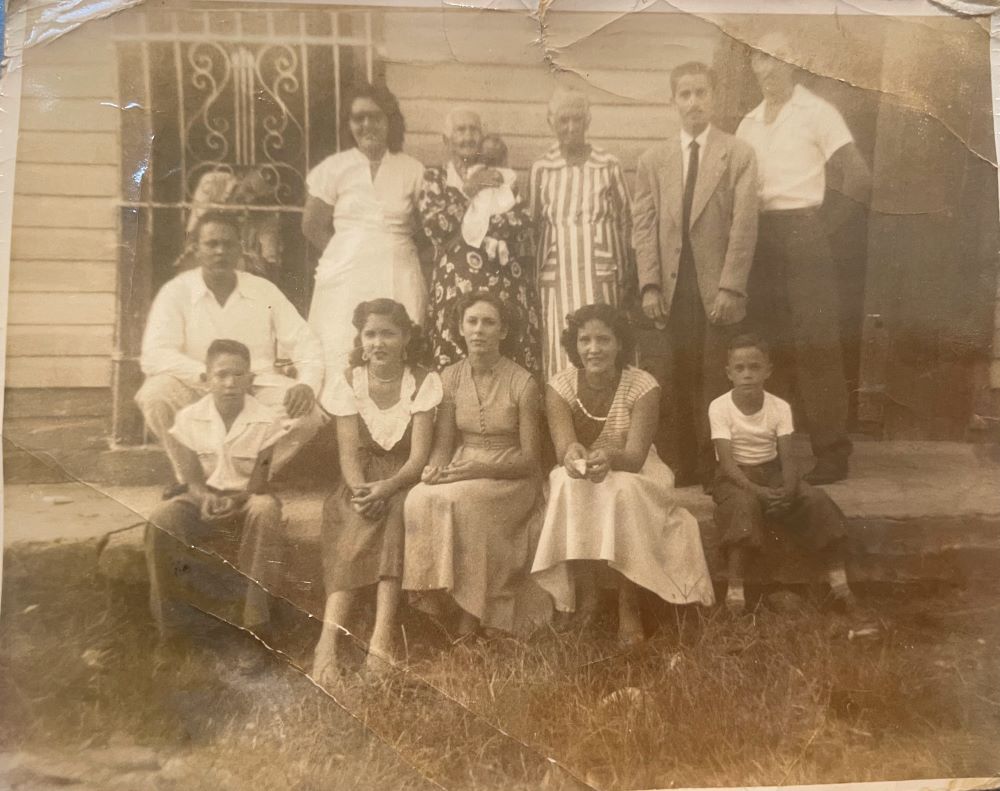Like the photograph that my maternal grandpa “Chichi” took of his three kids and his in-laws on Christmas Eve in December 1949, this image documents more than he probably intended about the social, economic, and cultural history of Cuba. At the center stands his ninety-plus-year-old mother, Teresa Rosado Rodríguez, known as “Mama Teresa,” holding the youngest member of the family, and his own mother, Carmen (in striped dress), the oldest of Mama Teresa’s 22 children. Carmen was one of 9 females of 11 children to survive to adulthood. If those facts were not enough to convey the struggles of this family and their triumphs, I should mention that “Mama Teresa” and her husband, Captain Rafael Rodríguez Santos, both served as spies on the side of Cuba during the 1895 War for Independence, despite their parents’ recent immigration from the Spanish Canary Islands. Through the decorative metal grates of the front room, the Singer sewing machine, covered in a handmade quilt, stands proudly: it was the main means by which the majority of women in the family (most of whom lived on the farm and never got married) made their living. Although the family owned enough land to subsist, their home had no electricity, one of the reasons that my grandfather Chichi took this picture outside and during the early days. Farm near Cumanayagua, Cuba. Photograph by Heriberto “Chichi” Rodríguez Rosado, circa 1949. Personal Collection of Lillian Guerra.
